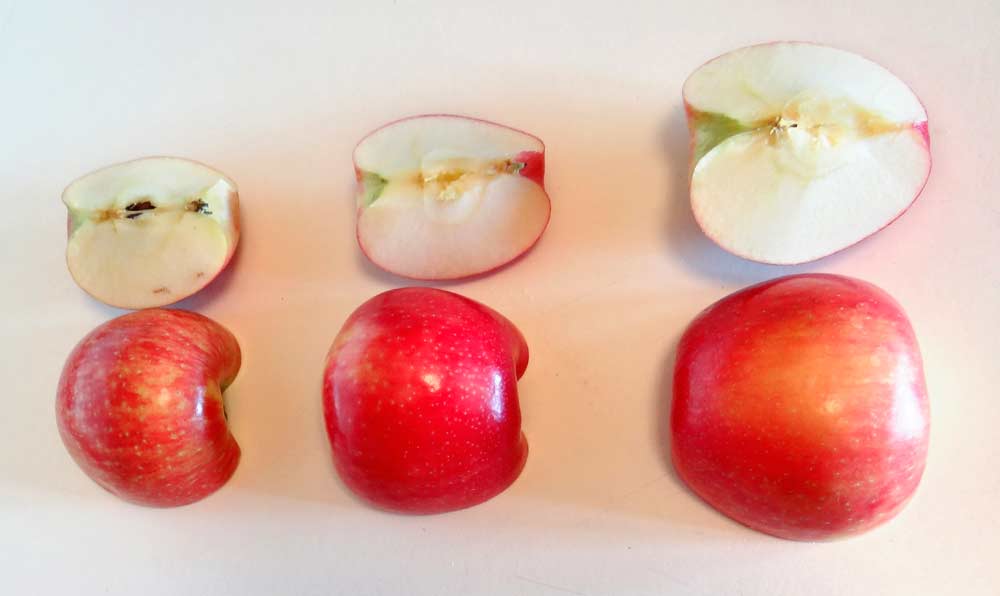
Most Honeycrisp purchased for this survey had a nice visual appearance, but flavor profiles varied immensely. (Courtesy WTFRC)
The increasing production of Honeycrisp apples has resulted in the variety being available to consumers more months of the year, but those apples may not always be of the highest quality.
That’s why, several years ago, the Washington Tree Fruit Research Commission began a survey to assess how long Honeycrisp apples remain on the retail shelf throughout the year and, more importantly, the eating quality of those apples.
Beginning with the 2011 crop, eight Yakima, Washington, supermarkets were visited in early spring 2012 to evaluate supply, external quality and eating quality. At that time, only six stores actually offered Honeycrisp apples from the 2011 harvest that late into the storage season.
However, as the supply of Honeycrisp increased, we adjusted the frequency of visits as well as the observation focus points to include additional information, such as the source of fruit. Surveys continued through 2017.
Taste of fruit
One of the main aspects of this survey was to determine the eating quality of Honeycrisp apples stored late. In WTFRC-funded Honeycrisp storage experiments, we had noticed an increase in flavor variation the longer fruit remained in storage.
It is well established that repeat purchases of apples decrease if consumers had an unsatisfactory eating experience. To determine the flavor profile, we cut fruit and a minimum of two tasters ate a piece.
Tasters recorded flavor values on a scale of one to three (3=variety specific Honeycrisp flavor/good flavor, 2=bland flavor, 1=off flavor).
Figure 1 shows the percentage of fruit tasted with good flavor in March. Over the observation period from 2012 to 2016, we recorded variable amounts of good flavored fruit sold in local stores (range: 0 to 43 percent).
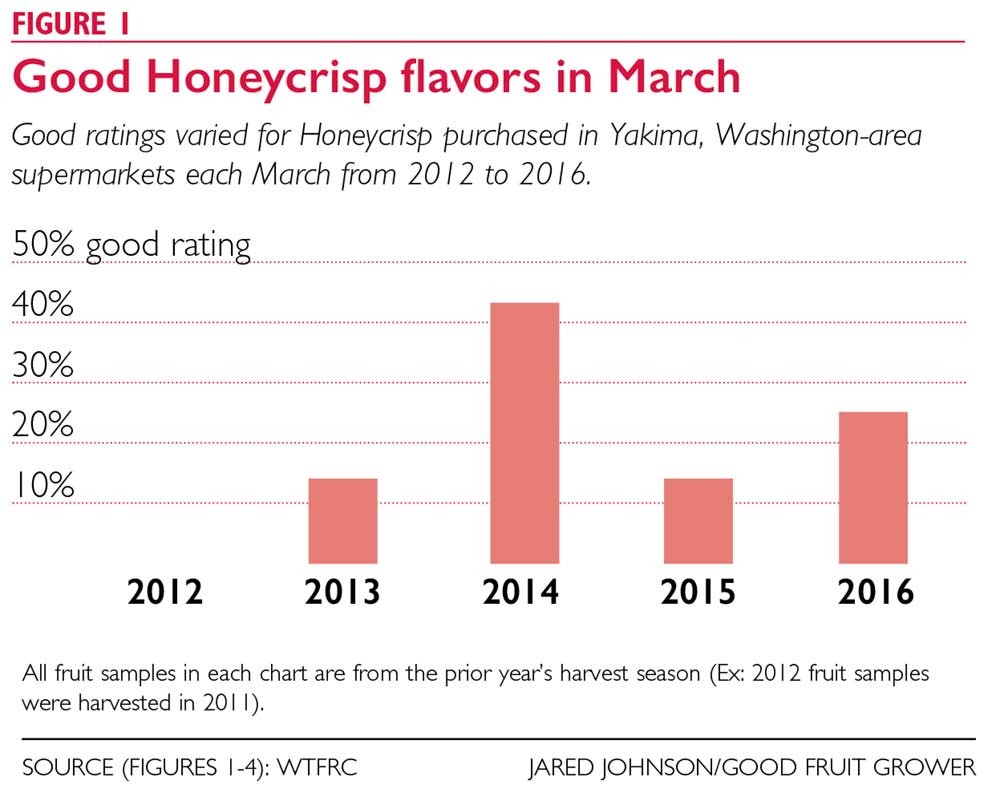
All fruit samples in each chart are from the prior year’s harvest season (Ex: 2012 fruit samples were harvested in 2011). Source (Figures 1-4): WTFRC (Jared Johnson/Good Fruit Grower)
In general, fruit with good flavor is rare in spring. This is important considering that optimum repeat purchases would be achieved if most people would have great tasting fruit available for purchase all the time (i.e., 80 to 100 percent of fruit purchased with good flavor).
We combined the ratings for bland flavor and apple flavor to develop an “acceptable” flavor rating to more closely mimic what consumers may find acceptable (or at least not off-putting).
Figure 2 shows an increase in acceptable flavor in March within the past four storage seasons (42 to 85 percent).
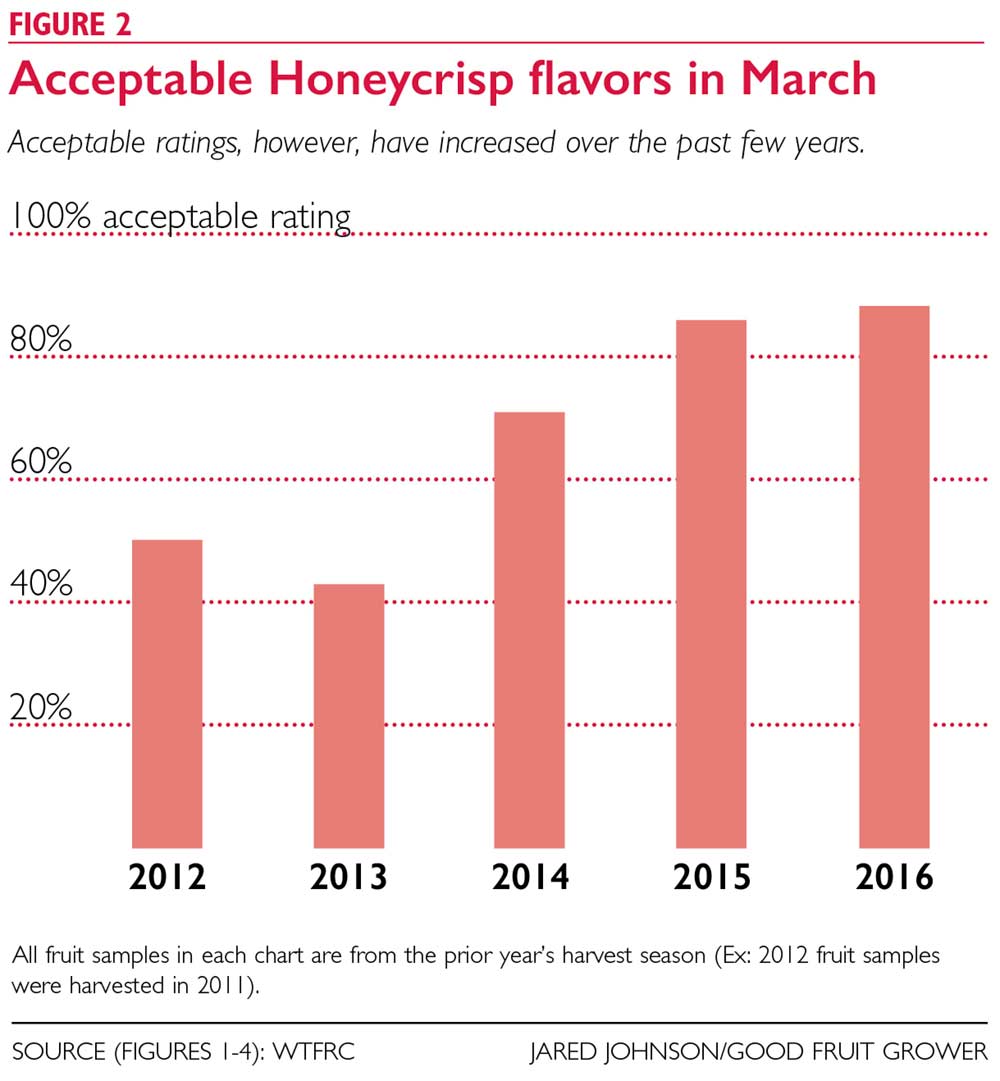
All fruit samples in each chart are from the prior year’s harvest season (Ex: 2012 fruit samples were harvested in 2011). Source (Figures 1-4): WTFRC (Jared Johnson/Good Fruit Grower)
Most Honeycrisp purchased for the survey had a nice visual appearance, but flavor profiles varied immensely. In the photo above, you will see that these three different apples have very similar appearances.
However, they are not similar in all aspects. In fact, they vary in taste from one end of the scale to the other. This shows that Honeycrisp apples might be externally appealing to the consumer but the eating experience could have a negative effect on their choices to continue to purchase this apple.
Fruit availability
The availability of Honeycrisp apples differed from year to year and month to month (see Figure 3).
Initially, this variety was thought to not store beyond Christmas. However, as early as 2012, some stores carried fruit until March, and by 2016, fruit was available year-round in local stores.
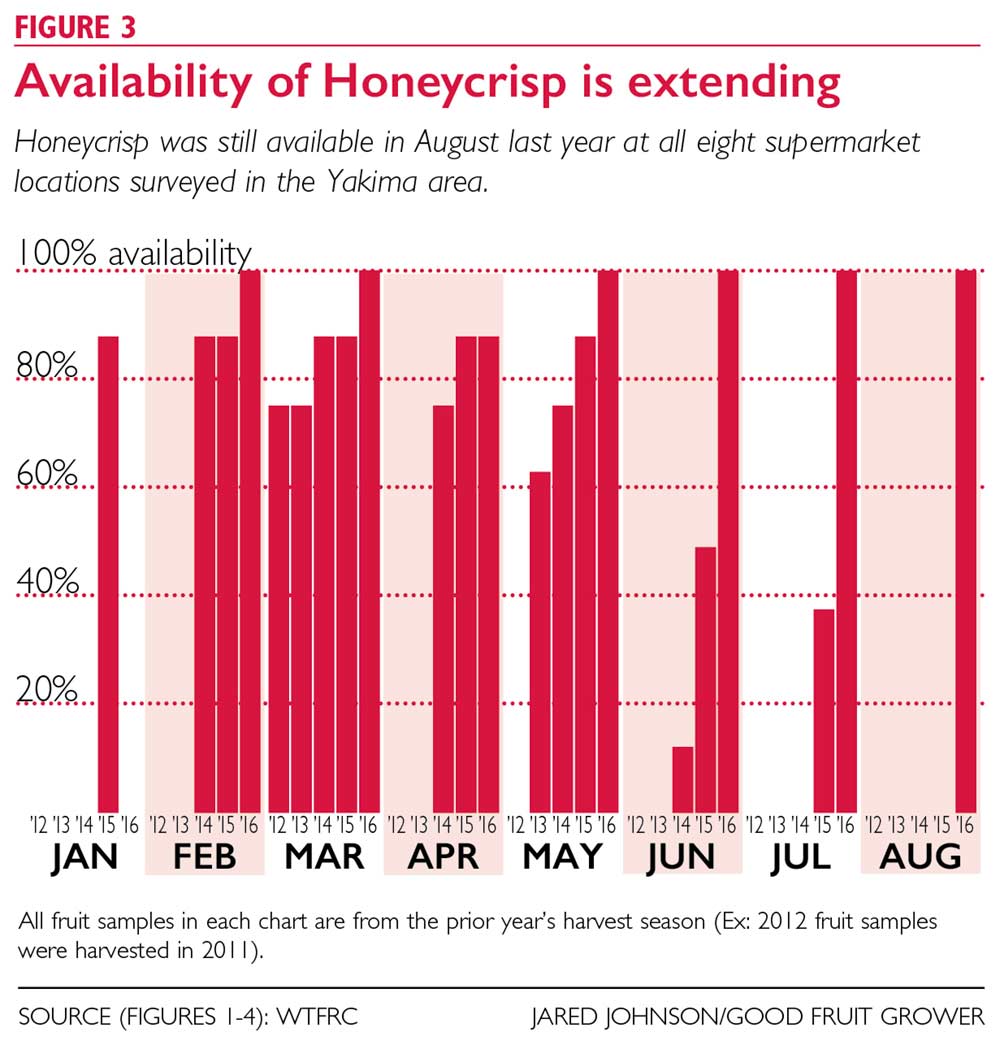
All fruit samples in each chart are from the prior year’s harvest season (Ex: 2012 fruit samples were harvested in 2011). Source (Figures 1-4): WTFRC (Jared Johnson/Good Fruit Grower)
As we continued our survey, we adjusted the amount and focus of visits in order to catch pertinent information. For example, we wanted to know when, exactly, the available fruit started to come from foreign suppliers instead of local ones.
In early June 2015, there were Honeycrisp apples available to local consumers from Chile; at least one store carried Chilean Honeycrisp apples that year. However, the majority of fruit came from the local supply, except for the summer months.
In 2016, we observed fruit from Chile in Yakima-based grocery stores at the beginning of August in at least one store. And in July 2017, we observed the first supply of fruit grown in New Zealand.
Summary
In summary, Honeycrisp are now available year-round in stores in the Yakima area. Consistently good eating quality in the second part of the storage season (February to August) remains of concern (see Figure 4).
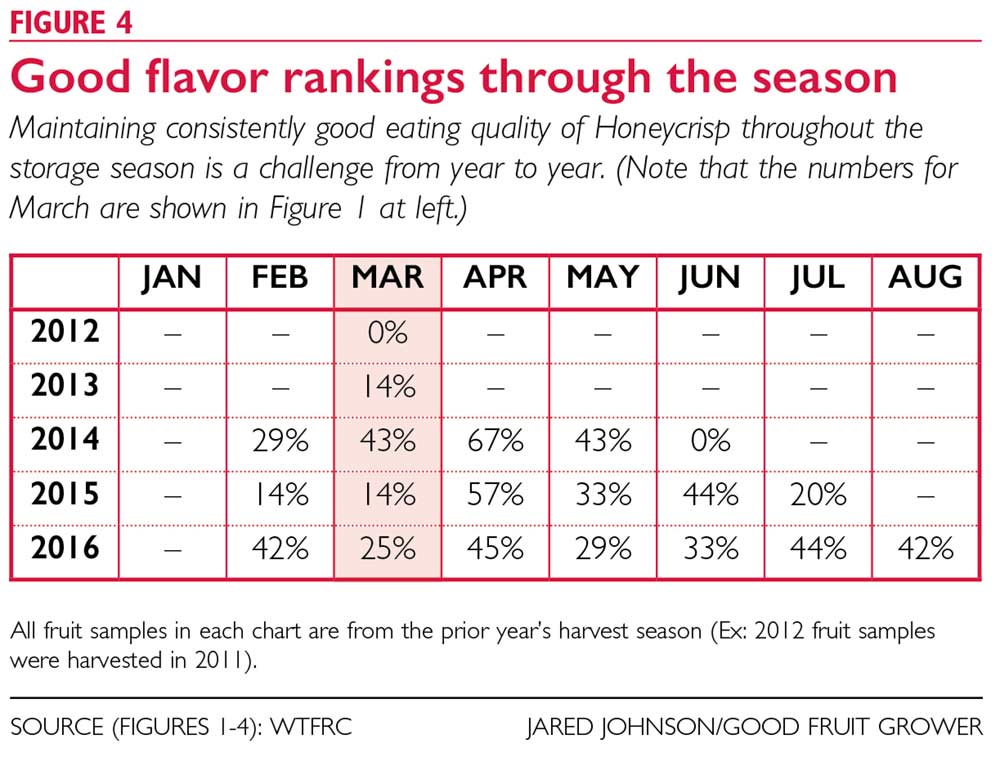
All fruit samples in each chart are from the prior year’s harvest season (Ex: 2012 fruit samples were harvested in 2011). Source (Figures 1-4): WTFRC (Jared Johnson/Good Fruit Grower)
If consumers are having inconsistent eating experiences from good to off flavor, repeat sales could be impacted negatively. It appears that this issue has remained a constant struggle over the past five storage seasons. •
This project was funded through the Washington Tree Fruit Research Commission’s internal research program. Ines Hanrahan is a projects manager and Mackenzie Perrault is a research assistant for the Research Commission in Yakima, Washington. For more about the commission, visit www.treefruitresearch.com






As a grower, we stopped multiple picks about 5 years ago, because waiting 7-10 days after first pick resulted in apples with considerable less flavor. The gain in color was virtually unchanged but the loss of flavor was huge. We now pick the entire crop one time waiting slightly longer before starting(2-4 days) . Results have been excellent , we’ll never do multiple picks again. Flavor is King, color is a pawn.
Great comment, Ben. Thanks.